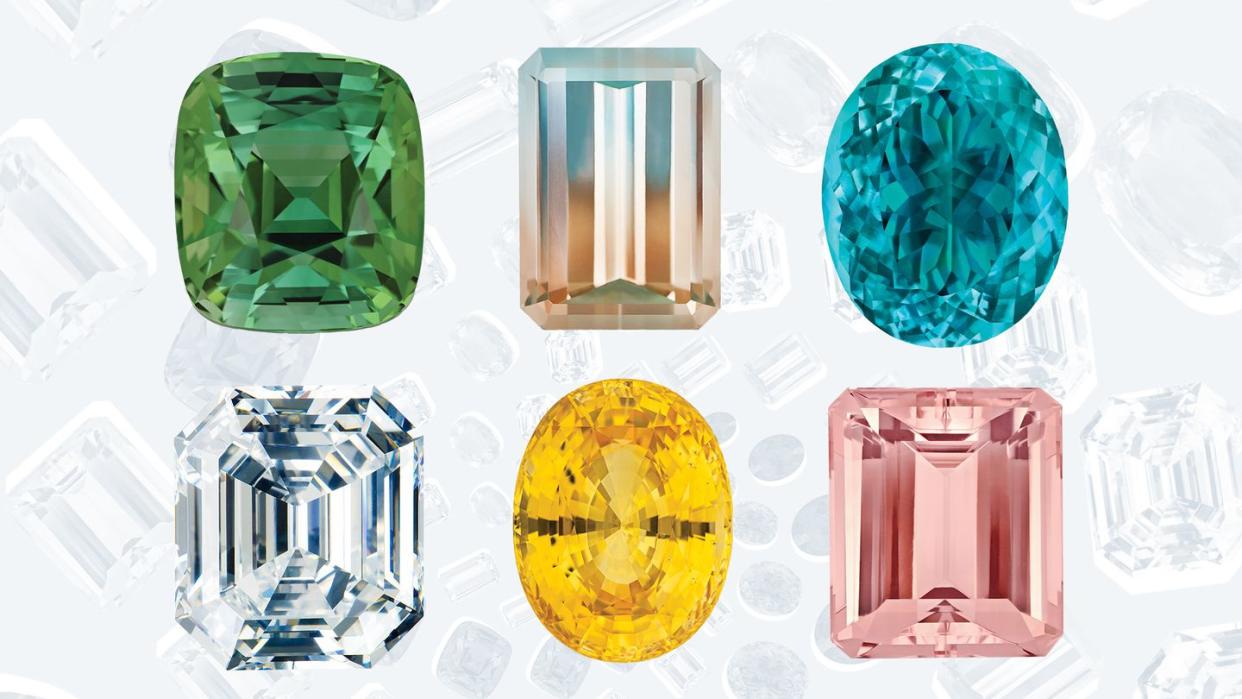Some of the World's Rarest (and Largest) Gems Are on View in L.A.

- Oops!Something went wrong.Please try again later.
Back in the day people were more relaxed about moving precious stones around the world. Consider, for example, the low-key arrangements for the famous Jonker diamond, which was shipped by ordinary parcel post in 1934 from South Africa to London. When diamond digger Johannes Jacobus Jonker first saw the mighty oblong ice-white 726-carat stone, he was convinced it must be glass. The Diamond Corporation knew otherwise but nonetheless popped it in the post addressed to De Beers. Miraculously it did arrive and, given that it was the fourth largest gem-quality stone ever discovered, sparked huge interest.
The talk of the town was that King George V and Queen Mary, with her known penchant for jewels, would buy or be gifted the stone to mark their Silver Jubilee (a viewing of the stone was requested by Royal Command). Instead, it was bought by Harry Winston—the American "King of Diamonds"—who immediately mailed his newly acquired million-dollar gem—for a 65 cents postage—to New York.
In the end, the diamond, cut and polished by Winston into thirteen stones, did form part of two other royal collections: Jonker 1, the largest at an impressive 125 carats, was bought by King Farouk of Egypt before vanishing in the aftermath of the Egyptian revolution. Years later it re-surfaced on Queen Ratna of Nepal before being sold to a private collector. And for the last 45 years the stone has remained out of sight of public view and largely forgotten. Until now: the rock is currently in L.A., part of a new exhibition at the Natural History Museum of Los Angeles County called "100 Carats: Icons of the Gem World."
Entering the museum’s vault your eye is drawn immediately to the mesmerizing flawless D-colored diamond. No wonder Jonker thought it might be glass—it’s as pure and clear as you can find. To put its size into context, the only comparable sized gems you might have glimpsed recently were the diamonds and sapphire mounted in the Imperial State Crown worn by King Charles for his coronation last year.
And yet, Jonker 1 doesn’t stand out here due to its size. Because twinkling from surrounding cases are 25 other monumental precious stones, some of which are double its weight. The colors astonish from brilliant scarlet red tourmaline, to the largest electric blue Paraiba ever exhibited, to great vivid sapphires in shades of buttercup yellow and bubble-gum pink. Each one is natural, having arrived from the depths of the earth in these shades and sizes. Indeed, the mission of the exhibition's co-curators, Dr. Aaron Celestian and Robert Procop of Exceptional Jewels, was to find rare examples of natural color in gems more than 100 carats that the world had never seen before. (Well, in the case of Jonker 1, not for several generations.)
Although there is a science behind the trace elements that produce these colors and formations, nonetheless I left convinced I’d witnessed a form of inexplicable magic. At 241.04 carats, the Crown of Colombia is the largest emerald ever unearthed in that country, with its subtle green inclusions, called jardins, telling of its earthly journey. I’ve never personally counted but apparently there are around 300 variants of the color green found in nature. A small wonder when you realize there is no more relaxing color for the human eye to view. This number count however doesn’t factor in the billion-year-old varieties that form beneath the earth in ravishing shades, from this bright emerald to a grass green Hindin peridot, to the pale minty beryl with subtle flashes redolent of the Northern Lights.
Some can even mysteriously change color. The Miracle is a unique sapphire which you could describe as teal, but under the museum lights it swings on the spectrum between green and blue with fiery inner flashes of purple. A wonder of the world of gemology? Certainly. But each of these gems is an icon in its own right. And together they form one of the most spectacular precious stone exhibitions you’re likely to see.
It's impossible to choose a favorite: I veered between the Great White, a beryl closely related to the emerald, but found here in brilliant white with no hint of green, and the Scepter, which at 127.30-carats is the largest bi-colored sapphire ever displayed. Viewing these rare phenomena could be the most effective agent we have to encourage protection of the environment and habitat in which they form—that is, planet earth. These aren’t found anywhere else in the solar system, perfectly illustrating the romance, mystery, and fascination of precious stones—and why the human zeal for gems has never diminished over 4,000 years.
Did Celestian and Procop find everything they wanted? “No," laments Procop, "no one has ever found a fine quality ruby of 100 carats or over. It may not exist.” The treasure hunt continues. The showstoppers they did discover all journeyed from the far reaches of the globe. But times have changed—none arrived by mail. Even Jonker 1 traveled with first-class security.
"100 Carats: Icons of the Gem World" is on view at the Natural History Museum of Los Angeles County through April 21, 2024.
You Might Also Like

